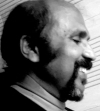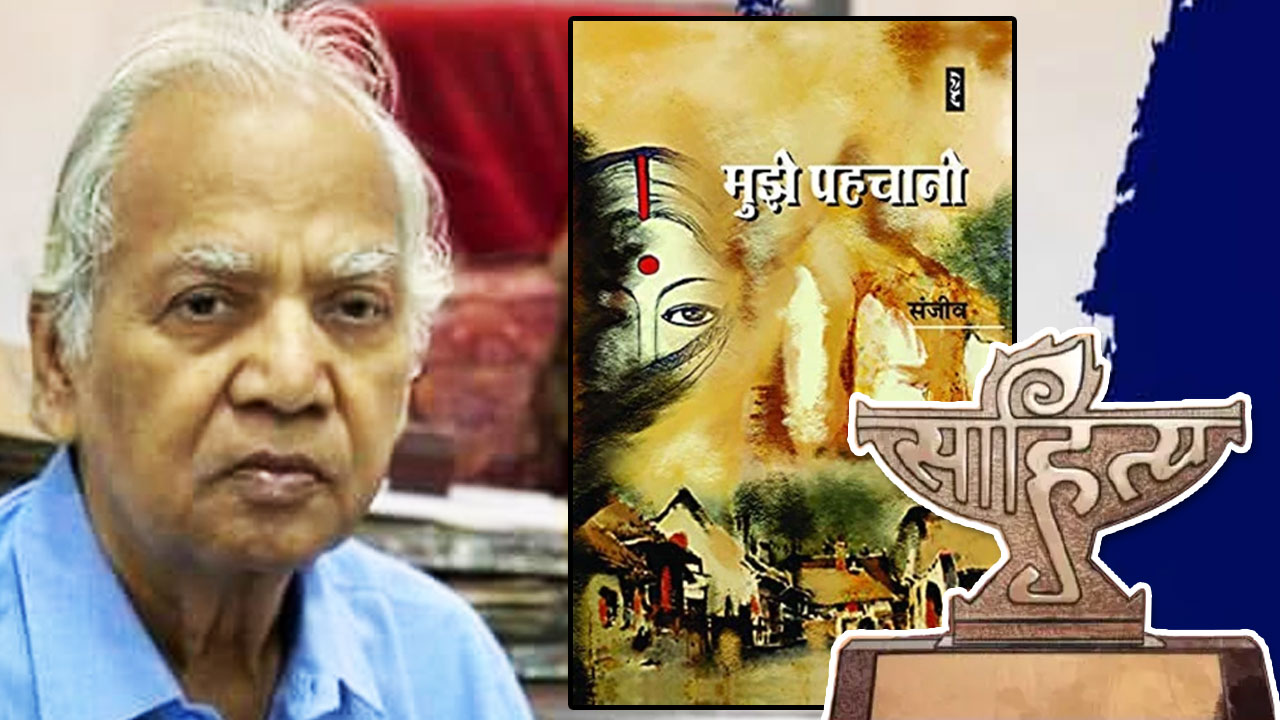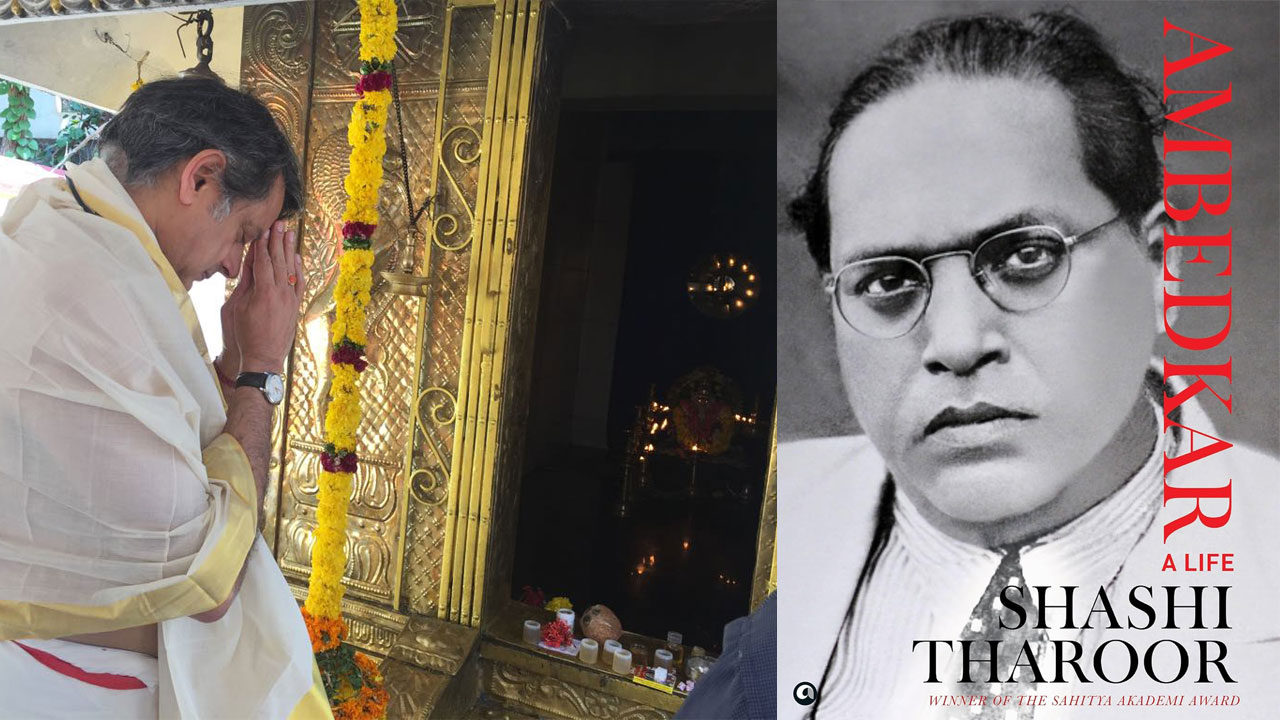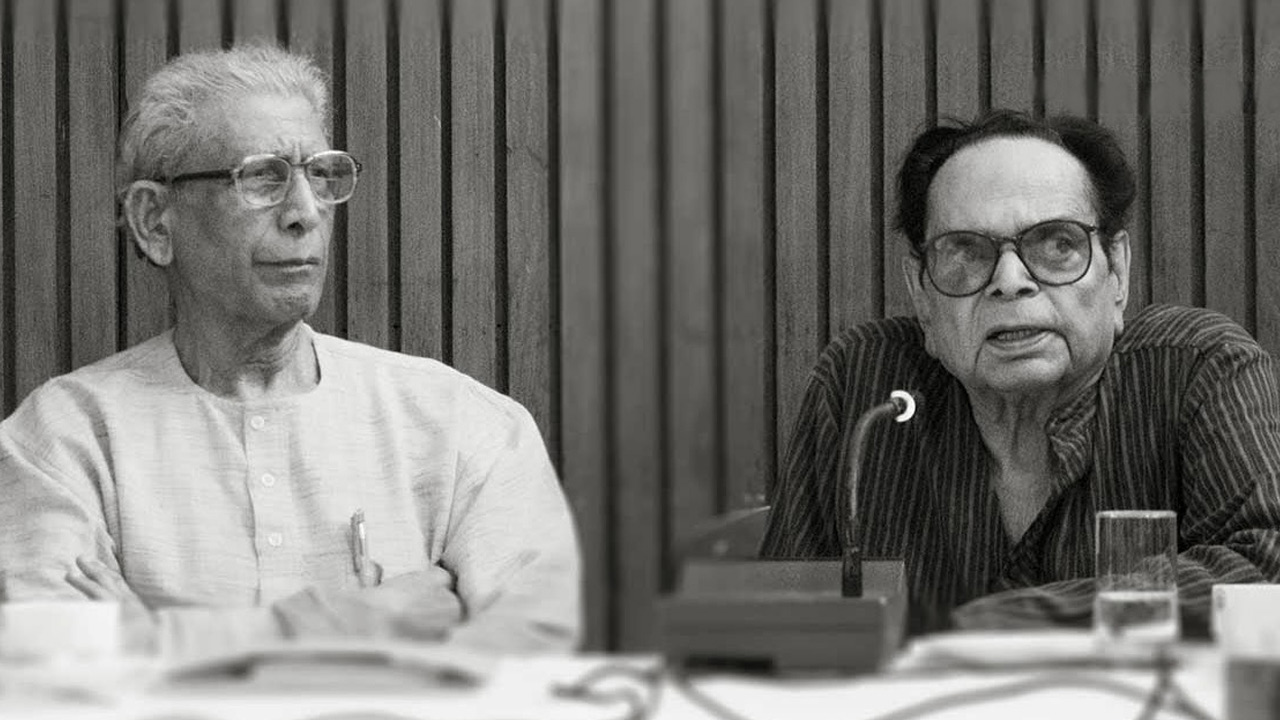The exercise of re-interpreting and unearthing alternative interpretations of Indian culture, literature, mythology, and history has been continuing for the past thousands of years. There have been Vedic and non-Vedic, Aryan and non-Aryan as well as other interpretations, re-interpretations and alternative interpretations. This process gathered pace during the colonial period. The national freedom movement triggered incisive discourses on Indian history, society and the course of the country’s future based on different interests and schools of thought. These discourses were aimed less at understanding the reality and more at safeguarding the interests of different classes, communities, and groups and mobilizing support for them. These discourses are broadly classified into colonial, nationalist, liberal, leftist, anti-Brahmanism, anti-caste, and anti-Varna (Dalit views). Besides, on the pretext of establishing a Hindu Rashtra, covert and overt attempts for re-establishing Brahmanism and Manuvad also began. These schools of thought were not what they appeared or claimed to be. It is a well-known fact that the nationalist, liberal (Gandhian) and leftist streams also had Brahminism and casteist patriarchy at their core.
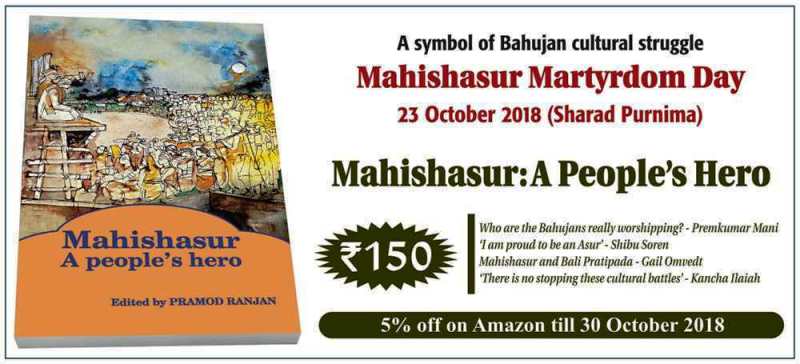
The traditions of Phule, Ambedkar, and Periyar identified the visible and invisible presence of Varna, caste, Dwij and patriarchal elements in these streams and resisted and exposed their oppression over Shudras, Atishudras, and women. The main enemy of the Shudras and Atishudras during the freedom movement was Brahmanism, which was the cause of their humiliation, degradation, slavery, exploitation, and persecution for thousands of years. After the exit of the British from India, political and economic, and the resultant social and cultural changes, created deep chasms between the movements of the Shudras (OBCs) and Atishudras (SCs), with the Atishudras establishing themselves as the Dalit movement. The mobilization of the Shudras (OBCs) became confined to demanding a share in the political cake and at the most, social justice. As a cultural value, the struggle against Brahmanism by this group had blurred or thrown on the margins, or the OBC forward castes embraced Brahminism and brahmanical patriarchy as a socio-cultural value. Thus, only the Dalit movement continued to resist Brahmanism, though a section of the OBCs did continue to work for building an independent cultural and literary movement of the OBCs. Three recent (2016) publications: The Case for Bahujan Literature, Hindi Sahitya-itihasKaBahujanPaksha and Mahishasur: A People’s Hero put forth the concept of a Bahujan cultural and literary movement and make a strong case for helping them blossom and grow, arguing that doing so is essential and indispensable for building a better future for the majority of Indians.

What is Bahujan literature and which section of Indian society does it represent? Which culture, literature, value systems, traditions, and social systems does it oppose? What does it want to replace them with and what is its ideology? Which ancient traditions does it take forward and which ones does it want to reject? These publications attempt to answer all these questions and more. These books are not written by one person but are a compilation of articles by many people who hold different views and come from diverse social backgrounds. It is, therefore, natural that these articles may be mutually contradictory, incompatible and expressive of deep disagreements and even confrontations. However, that does not mean that in their totality, they do not send out a common message. They all are in agreement on some fundamental issues. Pramod Ranjan, the editor of the book, is clear on the concept of Bahujan literature. He writes, “The concept of Bahujan literature is simple – the literature of the Bahujans as opposed to that of the elite – as Buddha had said 2500 years ago, Bahujan Hitay, Bahujan Sukhay”[i]. He goes on to say, “Bahujan literature is the literature of the majority, but it is not majoritarian literature. It is not based on numerical strength. It is the representative voice of different sections of society against the collective communal consciousness built by Manuvad and in favor of those facing social and cultural deprivation. This is the literature of the last man in the last row facing any deprivation. It not only raises the issues of economic deprivation and untouchability but also identifies the different forms of socio-cultural exploitation and considers them important”[ii]. For the sake of clarity, the editor also identifies today’s deprived sections. “In today’s India, the key deprived communities are – women, SCs, STs, OBCs, DNTs, and all Pasmanda religious minorities. The concept of Bahujan literature is concerned equally about the travails of each of these communities and believes that the reasons for the exploitation of each are more or less the same. Moreover, if these reasons are to be described in one word, that has to be Manuvad.[iii]”
It will be difficult for anyone to question this concept of Bahujan literature or to raise doubts about its usefulness, indispensability, and need for a significant section of Indian society. What makes the idea of Bahujan literature even more useful is the fact that the characters in the people’s literature as produced by Indian leftist progressive literary organizations and their leaders in the name of class and class history are somewhat abstract. They do not match with the Indian people. It is modeled on the proletariat of Europe and Russia and not the Indian proletariat who comprise mainly Shudras and Atishudras. (Premchand, Rahul Sankritayan and to some extent Muktibodh took a slightly different line. In any case, they were out of the leftist organizational structure and saw the world with their own eyes rather than through the prism of Marxist theories, and they were also pushed out from the said circles).
Bahujan literature is the literature that portrays the life of the common Indian vis-à-vis the mechanical, abstract, pigheaded, pro-Dwij class literature of the progressive literary movement. It is the literature of and about the people who are victims of exploitation and oppression of all kinds, as Pramod Ranjan says. There is no problem up to this point. However, the problem begins when Bahujan literature is taken to be synonymous for OBC literature and this view is stretched to such an extent that mere birth into OBC families is considered as a proof of being progressive and pro-people and praises are showered on the litterateurs who, fundamentally, patronize Manuvad and in the works of whom, the pain and anguish of the Shudras and Atishudras find no mention. Some articles (compiled in the book), while delineating the concept of OBC literature, suggest that Dalit literature is a rival of OBC literature and has encroached on its turf. This view comes out most prominently in Rajendra Singh’s piece “Concept of OBC literature.” He defines it in constitutional-legal terms: “OBC literature is the literature of the educationally and socially backward classes.[vi]” Without employing any criterion based on values, he furnishes a list of OBC authors only on the basis of their caste. Contradicting this, Virendra Yadav writes, “To imagine the concept of OBC literature in the manner of Dalit literature is a disputed and dangerous exercise, especially when one limits it to the identity of a particular caste group. Caste-based prejudices become evident when one microscopically searches for ‘OBC’ elements in the writings of Bhartendu, Maithilisharan Gupt, and Jaishankar Prasad but ignores literature by writers from non-backward sections, in which the laboring backward classes and the marginalized sections of society occupy the central place. If one is searching for the laboring tradition of the backward community against the dominant elitist literary culture, then should that search be based on the subject matter of literature or the caste of the writer[vii]?”
Commenting on the relationship between Dalit and OBC literature, Premkumar Mani asks, “If OBC literature has a distinct ideology, it should be specified. Otherwise, it is nothing great about building a new sect on the basis of caste.” Dalit literature had an ideology – the ideology of Phule and Ambedkar[viii]. While welcoming OBC literature, Kanwal Bharti also raised the question as to what its philosophy would be. He argues that Dalit literature has a distinct identity and at its root is the philosophy of JotiraoPhule, Ambedkar, Buddha, and Kabir-Raidas. Opposing the Varna system and untouchability is its underlying ideology. Similarly, what would be the philosophy of OBC literature[ix]?

On the one hand, the book The Case for Bahujan Literature is focussed on the concept of Bahujan literature, on the other hand Hindi Sahityaitihas Ka Bahujan Paksha puts forth the alternative ways of looking at the dominant history of Hindi literature in the light of the above concept and proposes to give due place to the marginalized sections and the literary works and authors representing the reality of the life of these sections, which were excluded from the dominant history. These omitted sections include women, Adivasis, and Shudra and Atishudras. The bone of contention as far as the dominant historical vision is considered is Acharya Ramchandra Shukla. To some extent, this was unavoidable as Shukla has written the only comprehensive account of the history of Hindi literature. However, that is also the limitation of this compilation. Hazari Prasad Dwivedi, Ramvilas Sharma, and Namvar Singh, who are considered the leading Hindi literary critics after Shukla – find only cursory mention in the book. No serious attempt seems to have been made to analyze their understanding of the history of Hindi literature seriously.
Most of the articles try to establish that Shukla’s standards and values vis-à-vis criticism and literary history are based on Dwij culture and brahmanical culture. Muktibodh underlines this fact in the following words: “If Pt. Ramchandra Shukla berates the Nirgun school, it is not without reason. Behind it is his Puranic consciousness.[x]” He says in so many words, “Once the Bhakti movement got dominated by the Brahmins, it did not take long to announce the victory of Varnashrama dharma again. Tulsidas made this announcement.[xi]”
Exposing the attempts made by the progressive Hindi critics to cover up Shukla’s Varna-casteist mindset and to declare him pro-people and liberal, Muktibodh writes,“It is surprising that whatever has been written by the progressives on Tulsidas deliberately ignores the socio-historical processes of which Tulsidas was a part. The pro-Varnashram and pro-casteism views of Pandit Ramchandra Shukla (for whom we have great respect) have been mixed with true progressivism as if he was a great advocate of pro-people outlook.[xii]” Then, isn’t Hindi criticism only strengthened by the norms of Chaturvarna? After getting a glimpse of ShuklaJi’s religious leanings, it can be said that the Varna system has played a decisive role in his canonization. Shukla’s discourse on power draws its strength from here and thereby establishes its power[xiii].
It is to repudiate Shukla’s version of the history of Hindi literature and criticism, based on Varna and caste that it is proposed to present an alternative Bahujan historical vision. “On the basis of a study of Acharya Ramchandra Shukla’s historical vision from the Bahujan angle, we reject this history of Hindi literature and its standards and demand its rewriting[xiv]. The protagonists of Bahujan history of literature are well aware of the challenges involved in rewriting. The biggest problem is to determine a historical perspective, stick to it, and make a comprehensive assessment of the history of the past 1,000 years[xv].
The classes which the dominant narrative of the literary history of India excludes or relegates to the margins also include women. This has been discussed in many articles. Sunita Gupta, Prempal and Ramnaresh Ram present a detailed analysis of this exclusion and its reasons. Quoting Suman Raje, Sunita Gupta writes, “As the process for writing the history of the remaining half gathered pace, it increasingly became clear that the male authors had done a grave injustice to the female ones. And this was not due to indifference but due to step-motherly treatment[xvi].” These articles also carry a long list of women litterateurs who were excluded or marginalized. Adivasis have been excluded from the mainstream for the past thousands of years. Some articles in this compilation view Dalit literature as a rival of Bahujan or OBC literature. This constricts the expanse of this discourse.
Literature and myths
The brahmanical Dwij culture, with its casteist mindset, has been regularly creating and re-creating myths to establish its dominance and perpetuate it. One such tale is the battle between Durga and Mahishasur, which ends in Mahishasur’s defeat and his murder. Mahishasur: A People’s Hero edited by Pramod Ranjan presents it as a cultural battle. He is right when he says that to understand the implications of any tale – whether it is mythological, literary or even of ‘Ayyars’ – one needs to deconstruct it. He raises the question as to why is there a need for a re-rendition of the mythological tale of Durga and Mahishasur. What would Indian society gain from it? He answers himself, saying that this re-rendition is for establishing the concept of justice and morality and for the victory of right over might. Our society, steeped in casteism for hundreds of years, will have to imbibe it for breaking its chains. The mentality of the people cannot be changed by performing surgery using the external tools of modernity. The re-rendition of mythological tales should be taken as an attempt at psychological treatment.[xvii]” Re-renditions or alternative renditions of myths is not something new. It is imperative for those who want to build progressive cultures to counter the reactionaries and the status quo-ists. Jotiba Phule had begun the process of re-renditioning. In his most famous book, Gulamgiri, he castigated Hindu mythology and the norms based on it. He also exposed the conspiracies hidden in these tales. In his Riddles of Hinduism, Dr Ambedkar sends out a clear message that the Indian scholars have built the structure of Hinduism and its society on the foundation of this mythology. A study of the writings of later writers and researchers, using Ambedkar’s and Phule’s analysis as a base, will reveal that most of the mythological characters’ central message meant to hide the truth and spread misinformation. Studies by Devi Prasad Chattopadhyay, D.D. Kausambi and Gail Omvedt show how Indian mythological tales took shape and where their basic intent lies[xviii]. The re-rendition of Mahishasur’s tale is a continuation of this tradition. Scholars like Kancha Ilaiah see it as part of a broader cultural struggle. He says, “It is the Buffalo-based nationalism’s resistance to the cow-based nationalism of the Hindutvavadi forces. Mahishasur is portrayed as a black he-buffalo.” He feels that this re-rendition has the potential of triggering a wider cultural struggle in the future. He writes, “If a cultural struggle begins between the Dalit-Bahujans and the savarnas from the Panchayat to the Parliament level, no one would be able to stop it.[xix]” Those who question the historicity of Mahishasur forget that mythological stories are a part of the subconsciousness of society. If Mahishasur continues to live on in the collective memory of the community, it would be dishonest to look for him in historical treatises[xx]. This collection makes a detailed study on Mahishasur and shows that he lives in the collective memory of society.
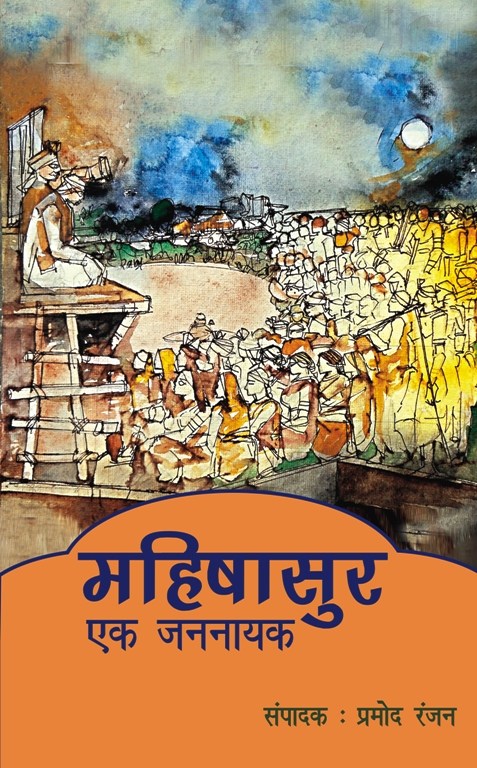
The articles in all the three collections, notwithstanding their internal contradictions, clashes, and limitations, do make a compelling case for a new, alternative Bahujan vision to repudiate the dominant Dwij culture, literature, and mythology.
(Published first in the October 2018 issue of Hindi magazine Subaltern)
Translation: Amrish, copy-edit: Saumya
[i] Pramod Ranjan (2016) Bahujan Sahitya Ki Prastavna, Bahujan Hitay, Bahujan Sukhay, Editor – Pramod Ranjan, Ivan Kostka, The Marginalised Prakashan, Wardha, Maharashtra, P-7
[ii]Ibid Pp 7-8
[iii]Ibid P-8
[iv]Suvira Jaiswal (2004) Varnajati Vyavastha, Udhvhav, Prakarya Aur Rupantaran, Preface, P-20, Granth Shilpi, Delhi
[v]Ramvilas Sharma (1981), Pramapara Ka Mulyankan, Bhakti Andolan Aur Tulsidas P-90, Rajkamal Prakashan, New Delhi
[vi] Suvira Jaiswal (2004) Varnajati Vyavastha, Udhvhav, Prakarya Aur Rupantaran, Preface, P-20, Granth Shilpi, Delhi
[vii] Virendra Yadav (2016) Bahujan Sahitya Ki Prastavna, OBC Ki Avdharna Kitni Prasangik, P-54
[viii]Premkumar Mani (2016) Bahujan Sahitya Ki Prastavna, Alochana Ki Adhogati, P-47
[ix] Kanwal Bharati (2016) Bahujan Sahitya Ki Prastavna, Mukhyadhara Banein Bahujan Avdharna P-98
[x] Muktibodh (2016), Hindi Sahitya Itihas Ka Bahujan Paksha, Madhyayugeen Bhakti Andolan Ka Ek Pehlu, P-21, Editor Pramod Ranjan, Series Editor Kishan Kaljayee, Ananya Prakashan, Delhi
[xi] Ibid P-20
[xii] Ibid P-23
[xiii] Sudheesh Pachauri (2016) Hindi Sahitya Itihas Ka Bahujan Paksha, Ramchandra Shukla Ki Dharma Bhumi, P-40
[xiv] Quoted, Vishesh Rai, Hindi Sahitya Itihas Ka Bahujan Paksha, Rajendra Prasad Singh (2009), Hindi Sahitya Subaltern Itihas, Gautam Book Centre, Delhi
[xv] Kamlesh Verma (2016), Hindi Sahitya Itihas Ka Bahujan Paksha, Kabir Aur Varchasvaviheen Sanskriti, P- 46
[xvi] Quoted, Sunita Gupta, Hindi Sahiyetihas Ka Bahujan Paksna, Suman Raje (2003) Hindi Sahitya Ka Itihas, P-27, Bharatiya, Gnanpeeth, New Delhi
[xvii] Pramod Ranjan (2016), Mahishasur Ek Jannayak, Bhinn Jeevan Mulya Ki Abhivyakti, P-13, The Marginalised Prakashan, Maharashtra
[xviii] Sanjay Jhothe, Pratiman (January-June 2016), Mahishasur Vimarsh, Ek Mithkiya Punahpath, P-108
[xix] Kancha Illiah (2016), Mahishasur: Ek Jannayak, Nahin Rukega Sanskritik Sangharsh, P-88-89
[xx] Dr Rajendra Singh (2016), Mahishasur: Ek Jannayak, Bhashavigyan Ki Drishti Mein Mahishasur, P-47
Forward Press also publishes books on Bahujan issues. Forward Press Books sheds light on the widespread problems as well as the finer aspects of Bahujan (Dalit, OBC, Adivasi, Nomadic, Pasmanda) society, culture, literature and politics. Contact us for a list of FP Books’ titles and to order. Mobile: +917827427311, Email: info@forwardmagazine.in)
The titles from Forward Press Books are also available on Kindle and these e-books cost less than their print versions. Browse and buy:
The Case for Bahujan Literature
Dalit Panthers: An Authoritative History

